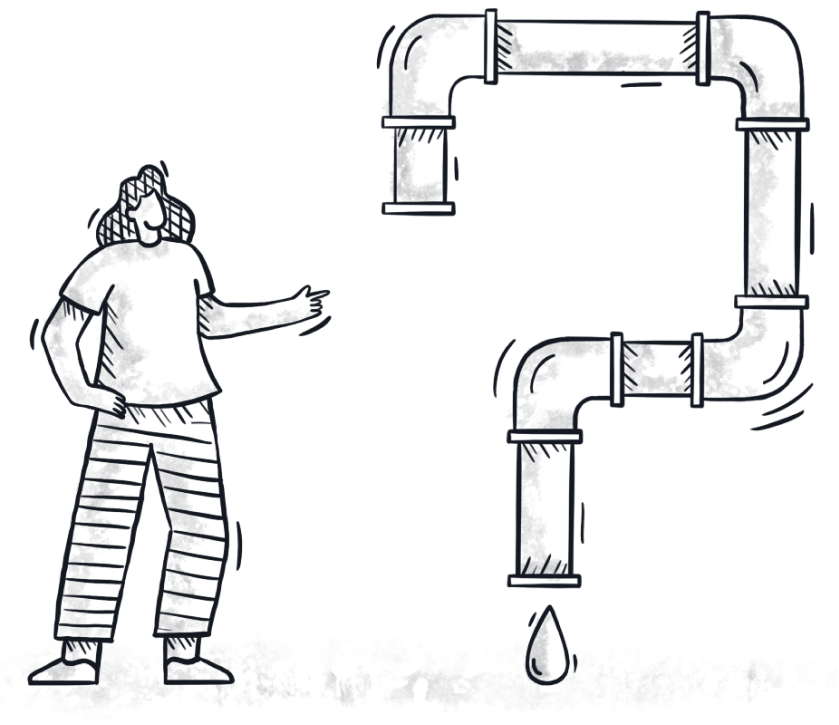Strategies and Implementation Plans
The Sanitation Strategies and corresponding implementation plans are based on information that is previously collected during the Needs Assessment & Analysis and Prioritisation and respecting and adhering to the Standards Along the Sanitation Service Chain.
Step 1: Set objectives and priorities
Define the target population. Prioritise the elimination of open defecation, followed by a rapid upgrading of access to safe sanitation services covering the full target population. As such, adopt a phased approach when required.
Step 2: Define the activities required to achieve access to safe sanitation services
The type of activities required to deliver access to safe sanitation services, is highly context specific. According to the Faecal Sludge Management terminology factsheet of the Global WASH Cluster, safe sanitation services do not necessarily include the transport and off-site treatment of faecal sludge.
If the following conditions apply, an on-site sanitation facility (like a pit latrine or septic tank) can be considered as safe sanitation, without the need to plan for desludging, transportation and treatment of the feacal sludge off-site:
- The ground water level is 1.5 meter or more deeper than the bottom of the pit or soak pit.
- The latrine or septic tank is 30 meter or more than away from a water source like a well or surface water.
- There is sufficient space to dig a new pit or construct a new septic tank once the used one is full, and equipment, material and knowledge are available to safely decommission and close the old pit or tank.
- People have access to a household latrine
Contexts where above conditions apply, are generally rural.
In othere contexts, where the above-mentioned conditions do not apply, a sanitation service chain is required for safe
sanitation services in emergencies. This means that pit latrines or septic tanks need to be desludged and the collected feacal sludge needs to be transported and treated. This is generally the case in:
- Crowded refugee camps, with no space for new pits once used pits are full and many people use the same toilet or
latrine, resulting in short filling-up times. - Context where the groundwater table is high or where there is a significant flood risk.
- Urban contexts
Step 3: Identify relevant and suitable approaches and technologies to implement the required activities as cost-effective, localized and effective as possible, according to the needs and wishes of your target audience.
Try to support already in-place systems and local service providers as much as possible, instead of implementing parallel systems. A phased approach can also be relevant for Technology identification and selection, Inclusive planning and participation is essential to deliver services (inc designs) that are aligned to wishes and needs of the target audience. Consider Operation and Maintenance needs and the health and safety of sanitation workers when selecting technologies.
Step 4: Make a realistic time planning and budget
Step 5: Define indicators the measure progress and include a monitoring plan
Step 6. Define roles and responsibilities clearly, using Standard Operational Procedures (SOPs)
See Operation and Maintenance. Focus specially on the health and safety of sanitation workers.
-
Bibliography
Key Resources and Tools
FSM Strategy for the Rohingya Response WASH Sector Aug 2023 Cox's Bazar, Bangladesh
Standard Operating Procedure: Installation of Decentralized Wastewater Treatment System (DEWATS) in the Rohyinga Refugee Camps of Cox’s Bazar, Bangladesh
A good quality SOP for the installation of a Faecal Sludge Treatment Plant (FSTP), produced…
Standard Operating Procedure – Emergency Lime Treatment Using Emergency Drying Beds
Good quality SOP example for emergency lime treatment used by the Bangladesh Red Crescent Society…
Related Common Questions
Still have questions?
You could not find the information you were looking for? Please contact our helpdesk team of experts for direct and individual support.

